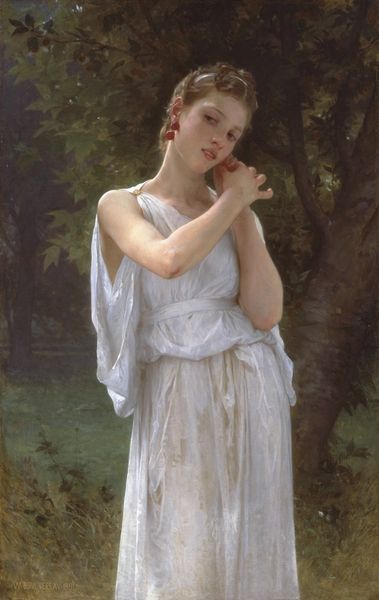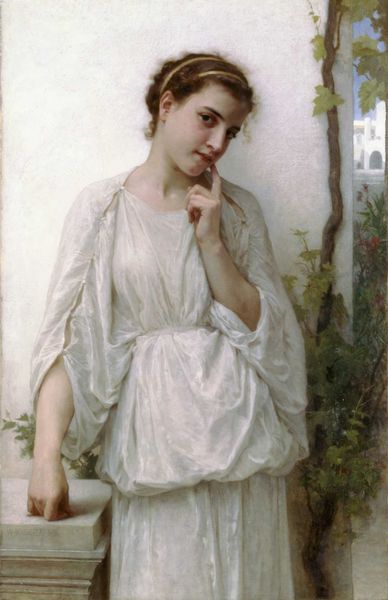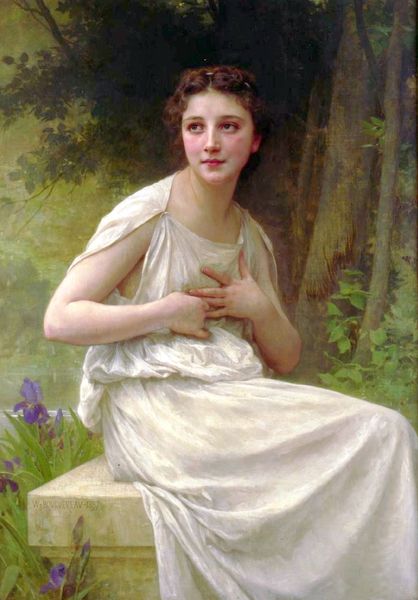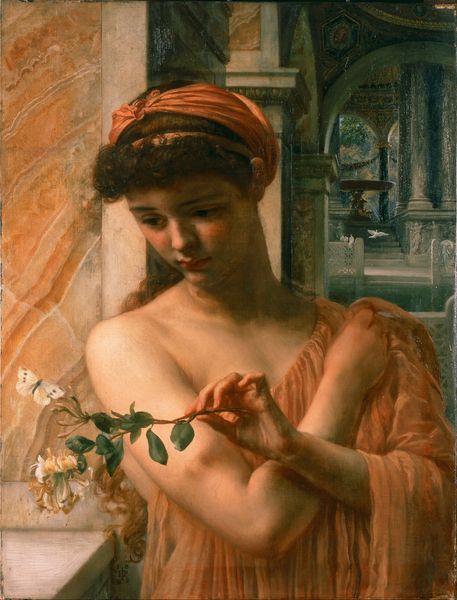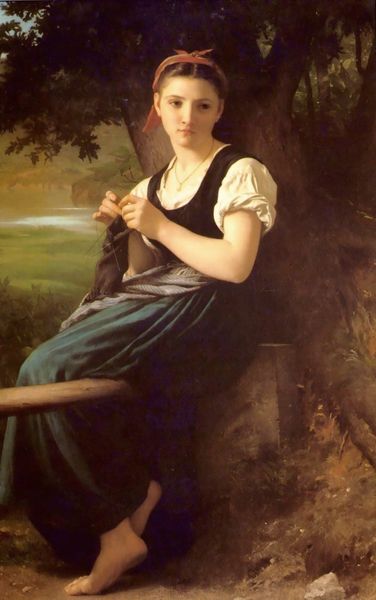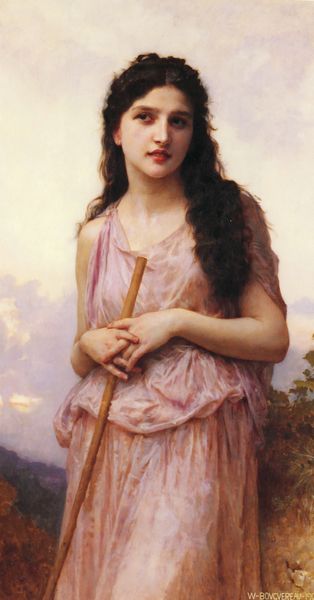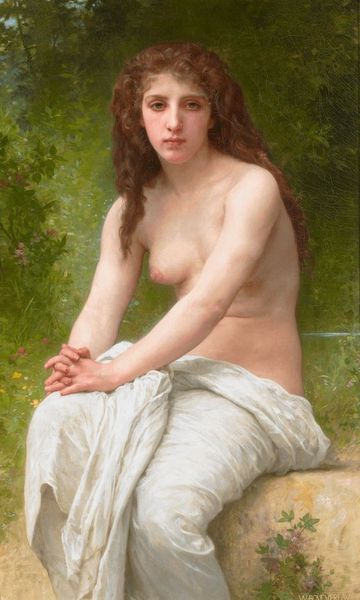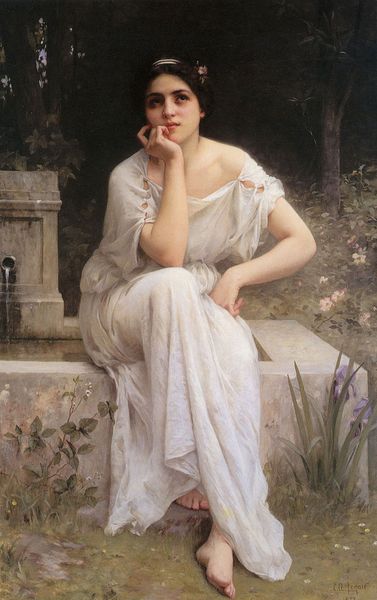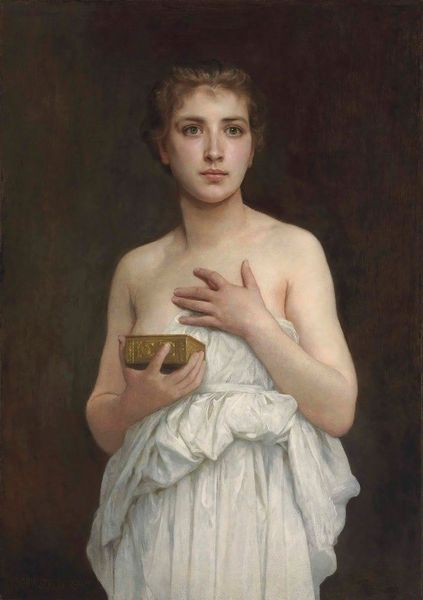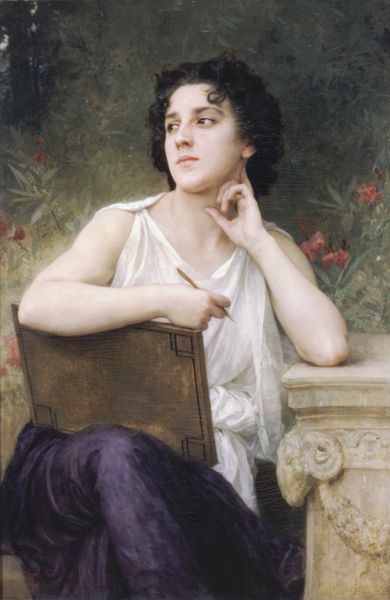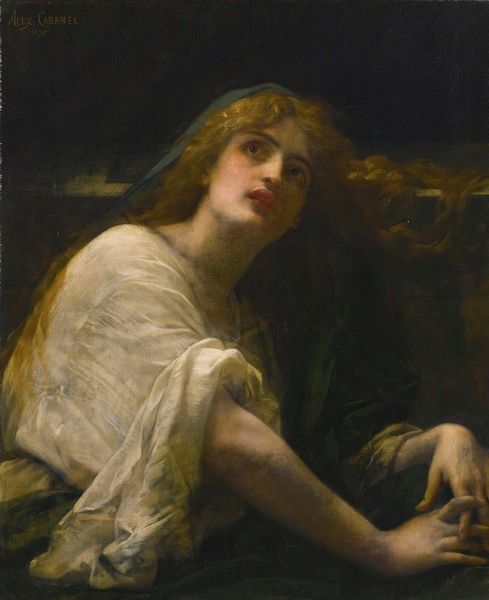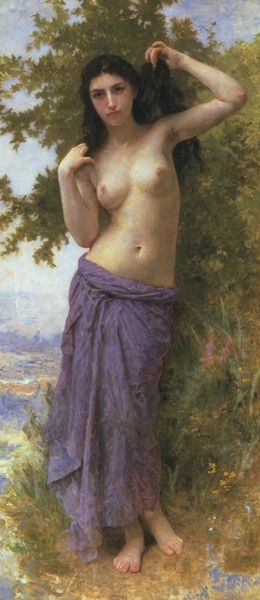
Dimensions: 93 x 66 cm
Copyright: Public domain
Editor: So here we have Bouguereau’s “The Butterfly,” painted in 1893 using oil paint. The first thing that strikes me is just how idealized the figure is. It’s beautiful, almost like a classical statue come to life. What's your interpretation? Curator: Bouguereau’s art perfectly exemplifies the Academic style dominant at the time. But let’s think about who had access to art, and to images of women, at that time. It catered to the tastes of the upper classes. Considering the socio-economic context, this image of a young woman with a butterfly moves into interesting spaces. Editor: In what way? Curator: The nude or semi-nude female form was considered acceptable within historical, mythological, or allegorical themes. How might this painting titillate the elite bourgeois male while remaining acceptable? The butterfly also becomes loaded with meaning. Editor: I see, so the artist, the buyer, and what is considered an acceptable representation all played into the creation and reception of the work? It’s a system. Curator: Precisely. And what does that suggest about our own interpretations and reactions to such works now? Editor: Wow, I never thought about it that way. It is as though every element of the painting—subject, style, and symbol—existed to uphold particular societal norms. This gives me a completely new lens for considering historical art.
Comments
No comments
Be the first to comment and join the conversation on the ultimate creative platform.
